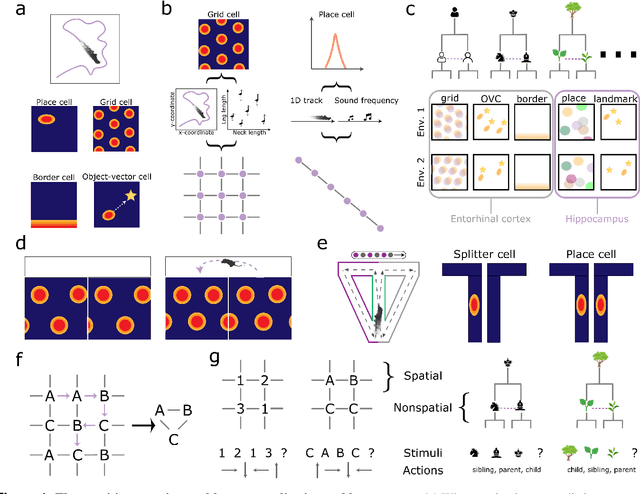David McCaffary
How to build a cognitive map: insights from models of the hippocampal formation
Feb 03, 2022



Abstract:Learning and interpreting the structure of the environment is an innate feature of biological systems, and is integral to guiding flexible behaviours for evolutionary viability. The concept of a cognitive map has emerged as one of the leading metaphors for these capacities, and unravelling the learning and neural representation of such a map has become a central focus of neuroscience. While experimentalists are providing a detailed picture of the neural substrate of cognitive maps in hippocampus and beyond, theorists have been busy building models to bridge the divide between neurons, computation, and behaviour. These models can account for a variety of known representations and neural phenomena, but often provide a differing understanding of not only the underlying principles of cognitive maps, but also the respective roles of hippocampus and cortex. In this Perspective, we bring many of these models into a common language, distil their underlying principles of constructing cognitive maps, provide novel (re)interpretations for neural phenomena, suggest how the principles can be extended to account for prefrontal cortex representations and, finally, speculate on the role of cognitive maps in higher cognitive capacities.
Towards continual task learning in artificial neural networks: current approaches and insights from neuroscience
Dec 28, 2021


Abstract:The innate capacity of humans and other animals to learn a diverse, and often interfering, range of knowledge and skills throughout their lifespan is a hallmark of natural intelligence, with obvious evolutionary motivations. In parallel, the ability of artificial neural networks (ANNs) to learn across a range of tasks and domains, combining and re-using learned representations where required, is a clear goal of artificial intelligence. This capacity, widely described as continual learning, has become a prolific subfield of research in machine learning. Despite the numerous successes of deep learning in recent years, across domains ranging from image recognition to machine translation, such continual task learning has proved challenging. Neural networks trained on multiple tasks in sequence with stochastic gradient descent often suffer from representational interference, whereby the learned weights for a given task effectively overwrite those of previous tasks in a process termed catastrophic forgetting. This represents a major impediment to the development of more generalised artificial learning systems, capable of accumulating knowledge over time and task space, in a manner analogous to humans. A repository of selected papers and implementations accompanying this review can be found at https://github.com/mccaffary/continual-learning.
 Add to Chrome
Add to Chrome Add to Firefox
Add to Firefox Add to Edge
Add to Edge